Revealed: Why the Premier League transfer market went crazy this summer
With 58,000 ‘likes’, it is fair to say that Gary Lineker rather struck a chord on Friday when he delivered his Twitter verdict of Kyle Walker’s £53 million move to Manchester City. “Imagine how much he would cost if he could cross the ball,” he wrote, before describing the valuation as “mental”.
A Sunday newspaper headline further underlined the shock. “The moment we knew the Premier League had lost its mind,” it said, while Lineker was similarly exercised again on Monday after reading Chelsea were reportedly prepared to pay £89 million for Argentina striker Gonzalo Higuain. “If anyone pays anywhere near that then the game has gone completely mental,” he said.
That we are experiencing something new is certainly true. There are 45 days still until this transfer window closes and, according to figures supplied to The Daily Telegraph by Deloitte, it is already the fourth most extravagant in English football history.
Deals worth £650 million have been completed before the final frenzy is even near. The associated player and agent wages will also reach record levels.
READ MORE: Matic and Costa closer to Chelsea exit after tour snub
READ MORE: Lukaku - Mourinho has already made me a better player
READ MORE: PSG meet Neymar release clause for world record transfer
Yet should any of this surprise us? And should it be of any great financial worry to a league that has now spent a quarter of a century defying predictions of an imminent burst bubble? An examination of the evidence surely leaves only one answer: No. The spending is absolutely proportionate with what the clubs can now afford and, in the case of Walker, the consequence of what insiders call a ‘double premium’.
Fullback, Kyle Walker becomes the world's most expensive defender at £50m plus. Imagine how much he would cost if he could cross the ball.
— Gary Lineker (@GaryLineker) July 14, 2017
Not only does the Premier League now have the richest group of clubs but also the least needy sellers, who are themselves owned by largely successful and proud billionaires. Factor in the balance of risk, and internal fees that might seem artificial to the wider football world will become increasingly common for those few players who are proven at the very elite end of the Premier League, even if one important caveat should be made.
It is that this window may well also be the prelude to a levelling-off, with the record-breaking £5.14 billion domestic broadcast deal unlikely to rise at anything like the 72 per cent spike of the current three-season cycle.
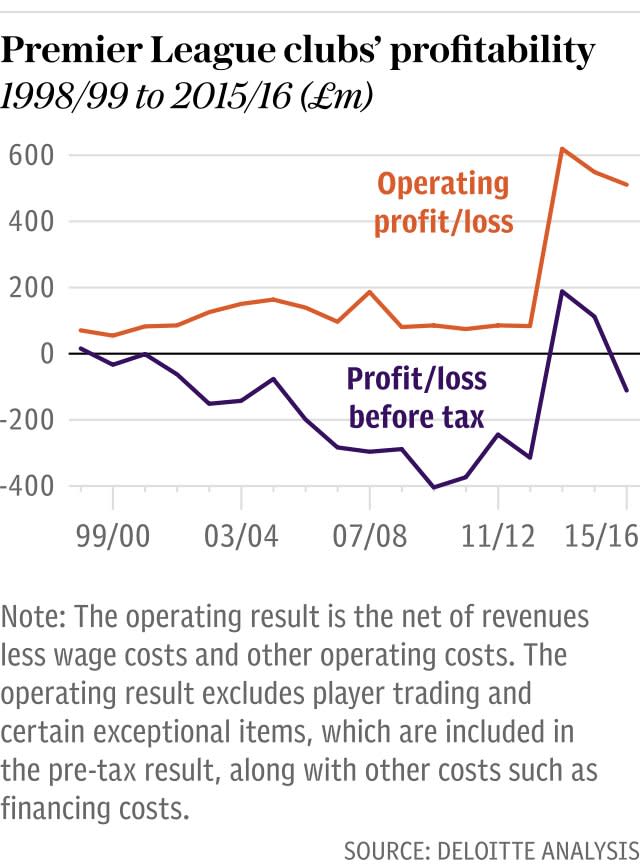
The new rights package from 2019-20 will be tendered later this year but several sources have told The Daily Telegraph that Sky and BT will not be drawn into a similar increase. Both companies are adapting to a revolution in broadcasting that contributed to a 14 per cent drop in audience figures for live Sky events last season.
On-demand channels like Netflix and Amazon Prime, as well as the illegal internet streaming of live sport, offer the most obvious challenges to the traditional subscription model. The piracy battle is intensifying but some progress was made earlier this year when the Premier League was awarded a High Court order which blocked streams at server level.
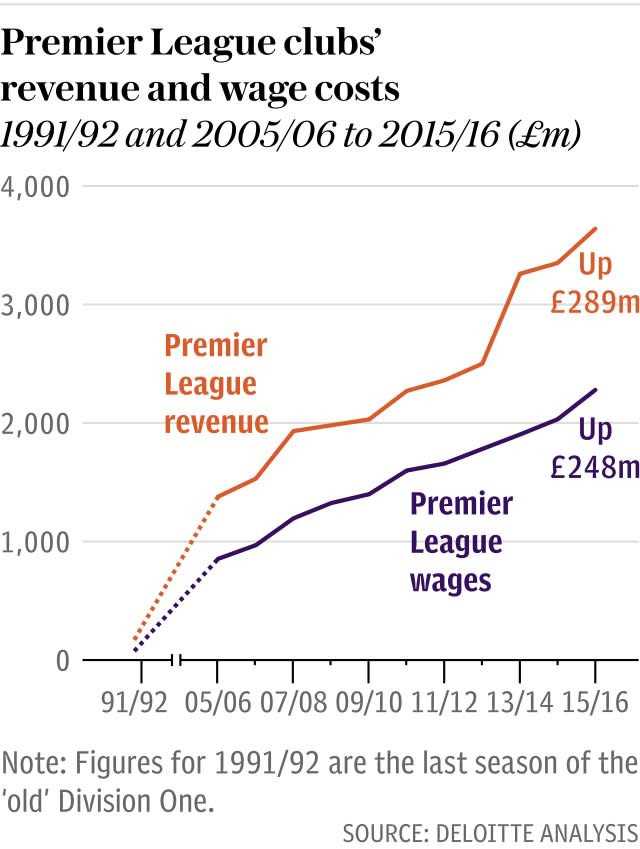
Toby Syfret, a TV research analyst for Enders, predicts that the rights value which so underpins the Premier League’s wealth are now “near the limits” but still integral to Sky and BT as “glue” for other services. There is also still confidence that football is well-placed to absorb wider declines in television use.
“Sport has a great advantage in that it is live unscripted drama,” says Dan Jones, a partner in the sports business group at Deloitte. “You can’t watch a box-set of sport. If you compare the audience to other genres, live sport holds up pretty well.”
A more steady uplift seems to be the prevailing expectation for the next broadcast deal and so there is no reason to think that current spending will threaten significant recent improvements in the clubs’ overall financial health.
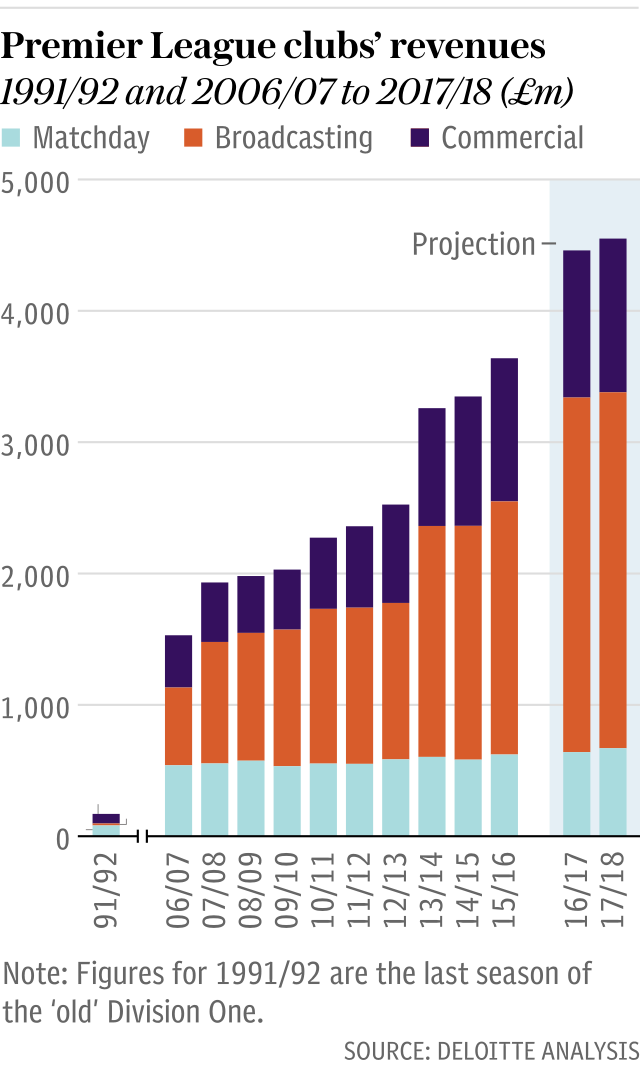
Deloitte forecast that 2016-17 could well be the first season in which every Premier League team was profitable. No club has gone into administration through the entire English professional pyramid since 2013. Net debt in the Premier League has reduced while wages, as a percentage of revenue, remain relatively constant.
“We have been asked the, ‘Will the bubble burst’ question for at least the last 20 years but what we are seeing in this transfer window is what we expected,” says Jones.
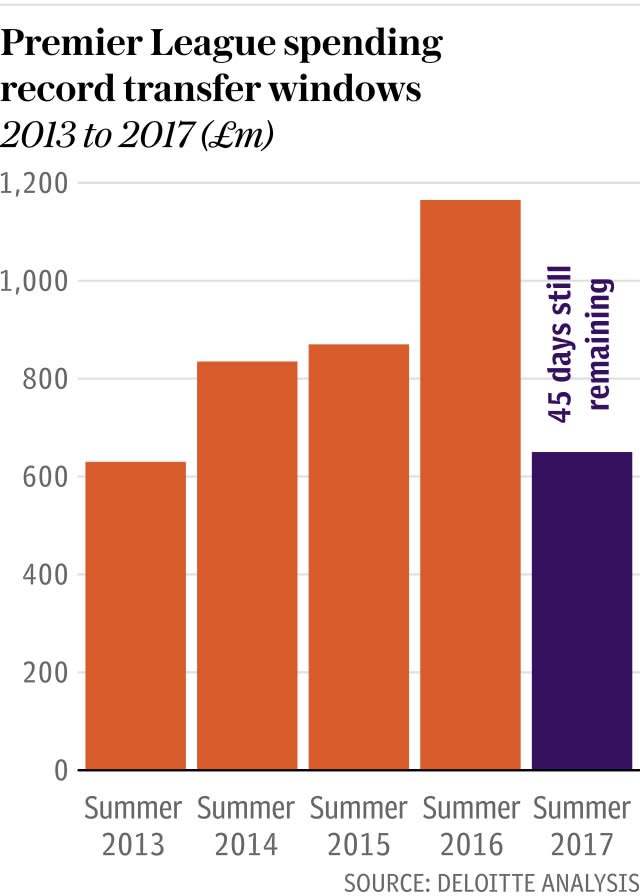
The question about value for money, however, surely still stands. The clubs might be able to afford what they are paying – and they are actually committing comparably less of their increased revenues to player wages – but those salaries are still more than double any other league. Any return in European or international competition has so far been minimal.
The process and metrics by which players are valued and profiled are rapidly changing. Different clubs have their own models but the wider use of analytics and benchmarking now inform more decisions and traditional assumptions about the relative importance of a versatile wing-back like Walker are being challenged.
The bottom line is that there are good and bad signings in every era. Walker is 27. Lineker himself was 31 and cost a reported £2 million when he was signed by Nagoya Grampus Eight in 1992. At that time, the English top-flight was collectively generating £170 million a year. That is 27 times less than the £4.6 billion of today and so, as a proportion of the league’s income, would be equivalent to a whopping £54 million fee. And Lineker would score only eight goals across 22 games in Japan. Manchester City will expect rather better value from their own new addition.
£250,000 up for grabs: pick your Telegraph Fantasy Football team today >>
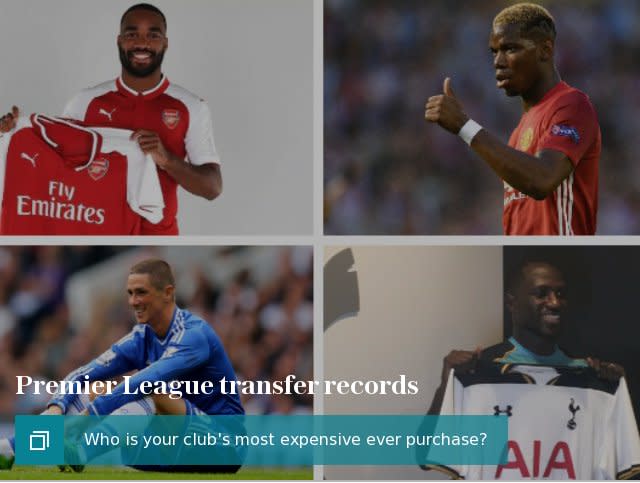

 Yahoo Sport
Yahoo Sport 



































































